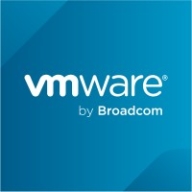

VMWare Tanzu CloudHealth and Spacelift compete in the cloud management space. VMWare Tanzu CloudHealth appears to have the upper hand with favorable pricing and comprehensive customer support for cost-sensitive buyers, while Spacelift offers advanced features appealing to those requiring extensive capabilities.
Features: VMWare Tanzu CloudHealth excels in multi-cloud management, delivering detailed cost analysis and governance features that enhance its utility. Spacelift stands out with robust infrastructure-as-code automation, seamless integration capabilities, and efficient CI/CD workflows, making it preferable for DevOps-focused teams.
Room for Improvement: VMWare Tanzu CloudHealth could improve its deployment simplicity and reduce complexity to shorten setup time. Greater customization options and enhanced integration with third-party tools could further enhance its appeal. Spacelift might focus on enhancing its user interface and offering more comprehensive training resources to streamline the onboarding process. Additional support for varied cloud environments and improved cost management features could provide further advantages.
Ease of Deployment and Customer Service: Spacelift is recognized for its efficient deployment model and responsive customer service, making it easier to implement and manage. VMWare Tanzu CloudHealth offers effective deployment and robust customer support, though its complexity might extend setup time for some organizations. Spacelift's streamlined deployment process presents a significant advantage for agile teams.
Pricing and ROI: VMWare Tanzu CloudHealth typically offers a predictable pricing model, attracting businesses focusing on cost management with noted cost savings over time. Spacelift, potentially higher in initial setup costs, provides significant ROI benefits through automation efficiencies, appealing to organizations prioritizing long-term infrastructure savings.
| Product | Market Share (%) |
|---|---|
| Spacelift | 1.0% |
| VMWare Tanzu CloudHealth | 1.9% |
| Other | 97.1% |


| Company Size | Count |
|---|---|
| Small Business | 4 |
| Midsize Enterprise | 2 |
| Large Enterprise | 4 |
Spacelift provides a sophisticated infrastructure management platform with key features such as Drift Detection and Terraform integration, simplifying complex deployments and enhancing user workflows through an intuitive interface.
Spacelift excels in modernizing infrastructure management by integrating smoothly with Terraform, using a pull request-based approach for visibility into logs. It automates change detection using GitOps from GitHub and supports AWS connectivity with credential management. Despite its strengths, some users find room for improvement in supporting smaller enterprises and offering more seamless cloud integrations with self-hosted versions. Handling of HashiCorp Vault secrets and cumbersome notification webhooks may require additional setup effort.
What are the most valuable features?In specific industries, Spacelift is primarily utilized for infrastructure management and deployment across platforms like AWS, Azure, and GCP. In banking architecture, it replaces Terraform Enterprise, ensuring secure and efficient operations. Projects like Google Fiber benefit from its capability to import and manage data effectively, engaging users with HashiCorp Language and GitHub for CI/CD integration.
VMware Tanzu CloudHealth, formerly known as VMware Aria Cost Powered by CloudHealth, is a specialized cloud management platform tailored for Multi-Cloud Cost Optimization. It offers comprehensive visibility into cloud spending across various providers, enabling users to identify areas for optimization and make informed resource allocation decisions. With features like reserved instance management, resource rightsizing, and automated cost governance policies, it facilitates financial management for optimal cost efficiency. Beyond cost optimization, Tanzu CloudHealth enhances cloud operations through workload optimization and governance automation, catering to multi-cloud environments encompassing public, private, and hybrid clouds. Its primary focus remains on enabling organizations to effectively manage and reduce cloud expenditures while supporting operations across diverse cloud platforms.
We monitor all Cloud Management reviews to prevent fraudulent reviews and keep review quality high. We do not post reviews by company employees or direct competitors. We validate each review for authenticity via cross-reference with LinkedIn, and personal follow-up with the reviewer when necessary.